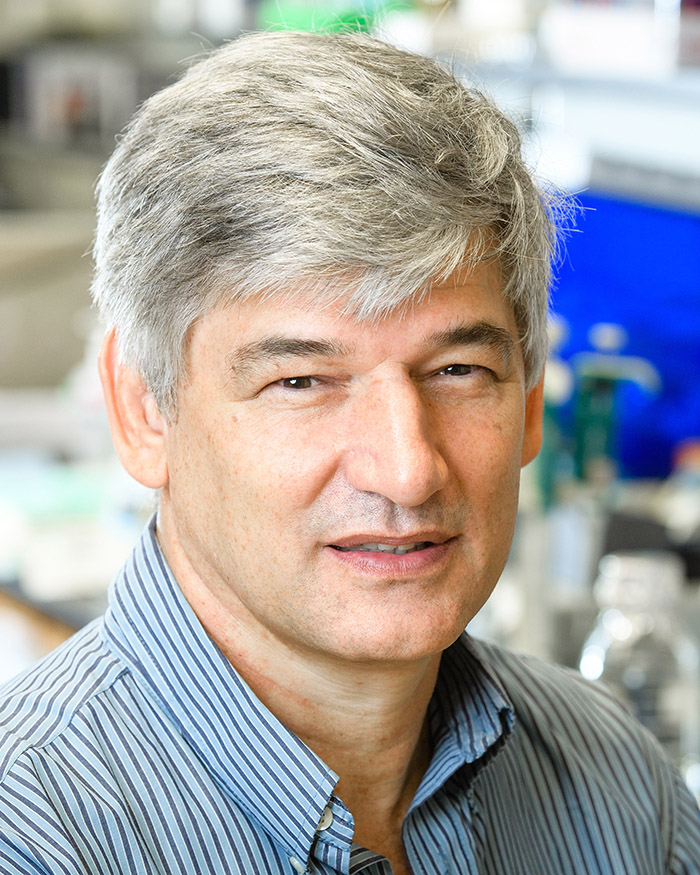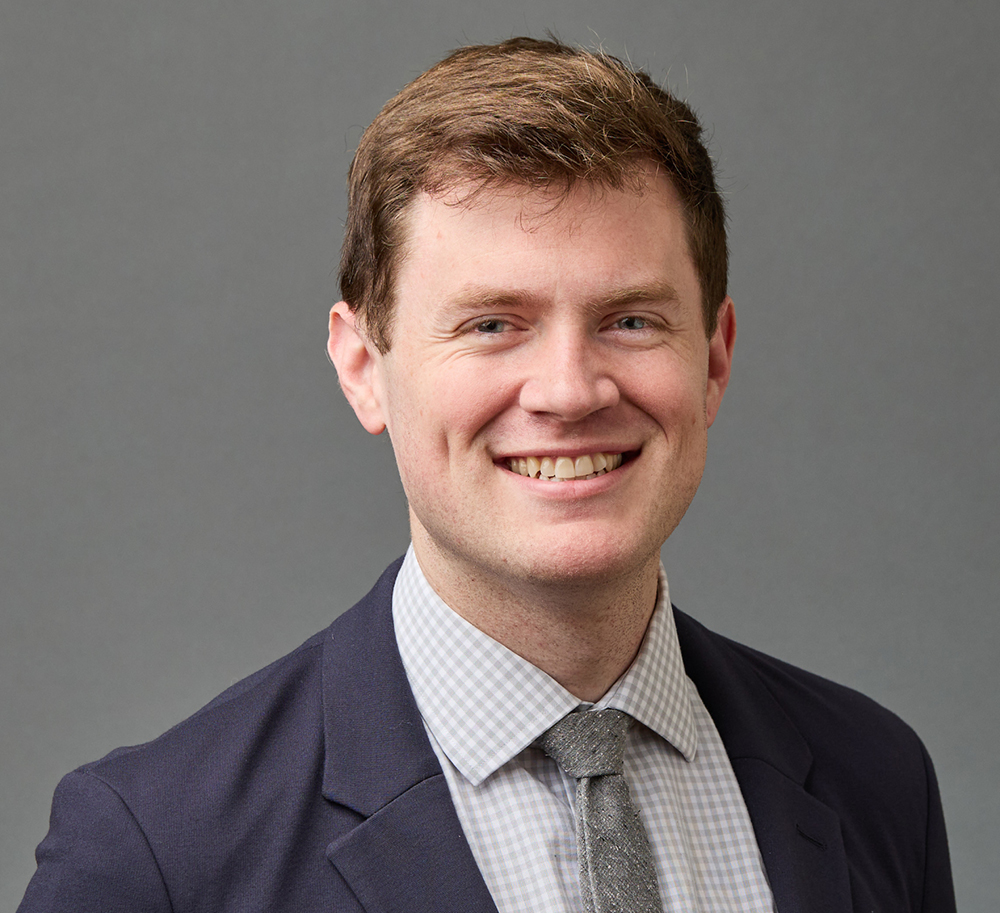 Adrie J. C. Steyn, Ph.D.
Adrie J. C. Steyn, Ph.D.
Adrie J. C. Steyn, Ph.D., professor in the Department of Microbiology, and Hayden T. Pacl. an M.D.-Ph.D. student at the Heersink School of Medicine and first author of this study, are the latest winners of the Heersink School of Medicine's Featured Discovery. This initiative celebrates important research from Heersink faculty members.
Their study, “NAD(H) homeostasis underlies host protection mediated by glycolytic myeloid cells in tuberculosis,” was recently published in Nature Communications.
In this study, Steyn and Pacl examined the role of NAD(H)-mediated glycolytic flux in protection against Tuberculosis (TB). They used a lactate dehydrogenase (LDHA) knockout mouse, performed a series of bioenergetic and metabolomic experiments, and examined the spatial and cellular distribution of LDHA in human lung TB lesions from patients in Durban, South Africa.
 Hayden T. Pacl“Conducting the research was a challenge—from coordinating efforts between labs 8,000 miles and eight hours apart, relying on an animal model with time points months apart, and performing the vast majority of experiments in the BSL-3 environment,” said Pacl. “Overcoming these obstacles was only possible thanks to my coauthors and their support and commitment to this project.”
Hayden T. Pacl“Conducting the research was a challenge—from coordinating efforts between labs 8,000 miles and eight hours apart, relying on an animal model with time points months apart, and performing the vast majority of experiments in the BSL-3 environment,” said Pacl. “Overcoming these obstacles was only possible thanks to my coauthors and their support and commitment to this project.”
TB is a global health crisis, with about 1.3 million people dying from it every year. More approximately, that is one person dying from TB every 18 seconds.
“We found that M. tuberculosis (Mtb) specifically reduces NAD(H) availability and consequently glycolytic capacity, which contribute to disease,” said Steyn. “Our research revealed that introducing exogenous nicotinamide (NAM) supplementation in mice effectively reduces the bacterial burden. Hence, our findings point to NAM as a potential host-directed therapeutic (HDT) for the treatment of TB.”
The Heersink communications team met with Steyn to gain insight into the study, UAB, and the science community.
Q: What compelled you to pursue this research?
My lab focuses on the intricate interplay of TB immunometabolism and bioenergetics, delving into how Mtb manipulates host metabolism and investigating how HDTs can rectify these alterations. The initial challenges were the project's multidisciplinary nature, identifying an appropriate in vivo model system, and ensuring our study was clinically relevant. My longstanding collaboration with Anupam Agarwal, M.D., and Joel Glasgow, Ph.D., helped Pacl leverage a novel LDHA knockout mouse to address some of our challenges. This mouse model was seamlessly integrated into our infection studies, contributing to the depth and success of our research efforts. By complementing the model with resected human TB lung specimens from South Africa, we gained unprecedented insights into the critical role of central metabolism in controlling TB. One particularly gratifying outcome was our demonstration that orally administered NAM serves as an effective prophylaxis and treatment for Mtb infection.
Q: How do you feel your research will impact the science community?
Exploring the complex interplay between TB, immunometabolism, and bioenergetics informs our understanding of the dynamic relationship between the host and pathogen during infection. This understanding is important for developing targeted therapeutic strategies aimed at disrupting metabolic pathways essential for the survival of Mtb.
Secondly, our findings have the potential to unravel key metabolic checkpoints that impact the effectiveness of immune cells in controlling TB infection. This could pave the way for identifying biomarkers associated with disease progression and prognosis, enhancing diagnostic precision.
Lastly, our unique approach of studying human pulmonary TB tissue, rather than relying solely on model systems, adds a strong clinically relevant dimension to our findings. This distinctive feature sets our research apart from most studies and underscores the importance of translating our insights into practical applications for human health. Given the lack of new, effective anti-TB drugs and vaccines, there is an urgent need to shift the current focus from model systems to a more thorough understanding of human TB.
Q: How has being at UAB and living in Birmingham affected your research?
Living in Birmingham has not only given me a strong sense of community but has also exposed me to diverse perspectives and opportunities, further fuelling my passion for contributing to TB research. I am genuinely delighted to call Birmingham, Alabama, my home and to be a part of the vibrant academic community within UAB. The supportive and collaborative environment here has significantly enhanced my research. I am grateful for the positive impact this city and UAB have had on both my personal and professional growth.
Q: What made you come to UAB?
In 2002, I interviewed for a faculty position at UAB. Throughout the interview process, multiple faculty members emphasized UAB's strong commitment to the success of its faculty, underscoring the institution's dedication to fostering a supportive academic environment. This commitment to success turned out to be not just a promise but a lived reality. I am grateful to be part of an institution that values the success of its faculty and actively contributes to their continued excellence.
Q: What do you think makes the UAB scientific community unique?
UAB's dedicated focus on global health, particularly in areas like TB, underscores its commitment to creating a positive impact in the lives of individuals on a global scale. Since 2011, UAB has been exceptionally supportive of my extended research efforts, enabling me to establish a second laboratory at the Africa Health Research Institute in Durban, South Africa. My TB laboratory in Durban not only represents UAB's footprint in Africa but also stands as an open and collaborative space for UAB graduate students, postdocs, and faculty. It facilitated numerous short and long-term visits over the past 10 years. This achievement is a testament to the visionary leadership at UAB.